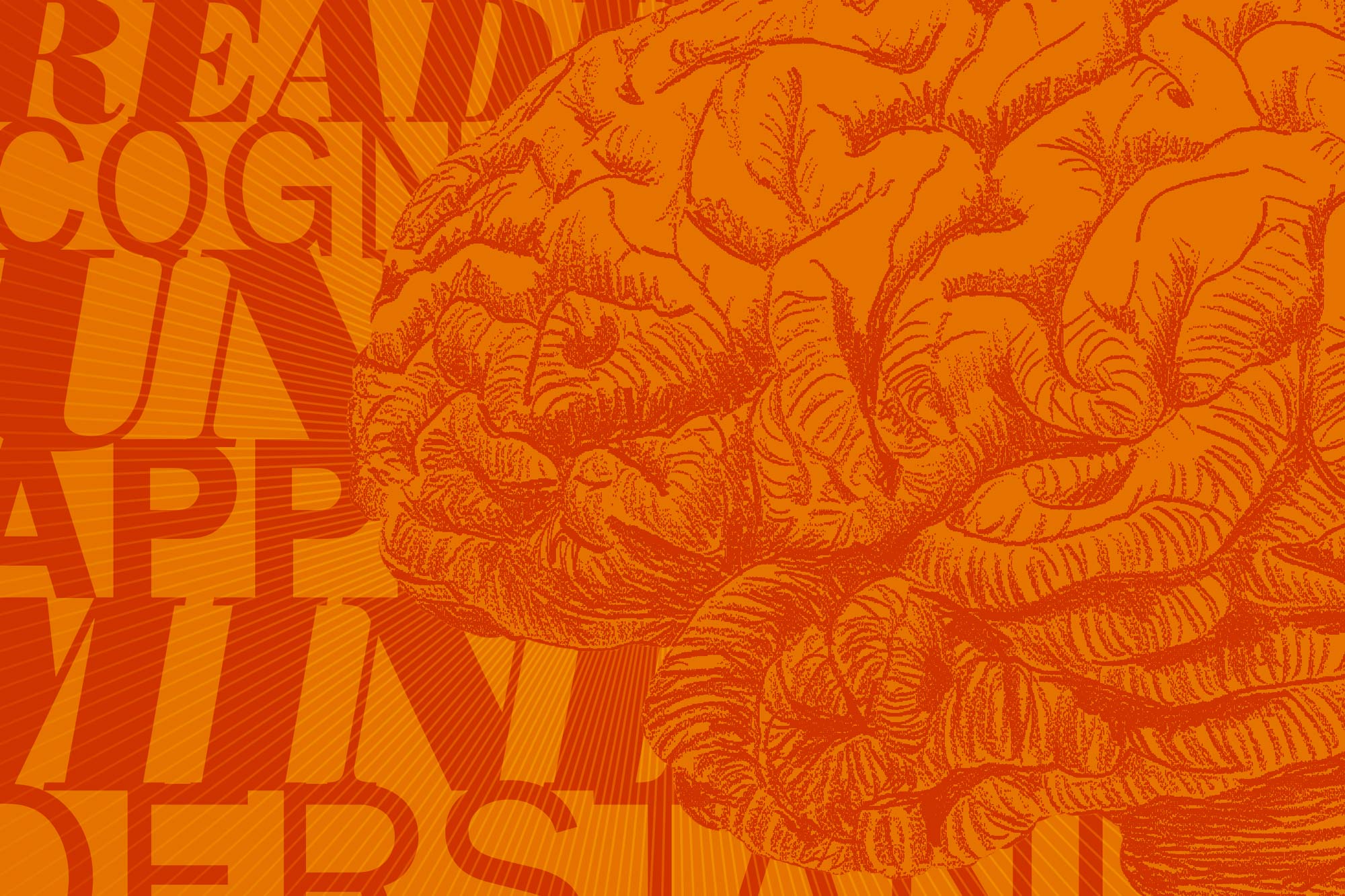Reading is more than recognizing letters and stringing them into words, sentences and paragraphs. In a new book, which considers reams of research on what happens to the mind when people read, University of Virginia psychology professor Daniel Willingham shows just what reading looks like.
Willingham, a Harvard University-trained cognitive psychologist, sat down with UVA Today to discuss his new book, “The Reading Mind: A Cognitive Approach to Understanding How the Mind Reads,” and his work in general.
Q. What is the premise of “The Reading Mind”?
A. The premise of the book is to summarize what is known about what happens in the mind when people read. So it’s not about learning to read – it’s what happens in the mind of an experienced reader when they are reading.
Oddly enough, I don’t think there was another book out there that did that. I thought it would be useful to people who teach reading.
Q. What is the distinction between the mind and the brain?
A. The easiest way to appreciate that is by analogy – the difference between hardware and software on a computer. You can have an algorithm that executes some sort of a formula. I think I even give an example in the book – to figure out when the next lunar eclipse will be visible in Charlottesville. Then that calculation can be done on different hardware systems. It can be done by a computer; if you’ve memorized the algorithm, it can be done by a brain. So you’ve got the algorithm, and then you’ve got the software implementing the algorithm.
So the difference between neuroscience and psychology or the type of psychology that I do is that neuroscience is concerned with the hardware and I’m concerned with the software.
Q. In the introduction to the book you quote the following lines from E.L. Doctorow’s “Billy Bathgate”:
“Before he got through it I was hearing the distant sound of police sirens, and it was so arduous for him to speak it that he died of the effort: “Right,” he said. “Three, three, Left twice. Two seven. Right Twice. Three three.”
What is the purpose here?
A. In this passage, gangster Abbadabba Berman has been shot and as he lays dying, he says this to the protagonist of the novel. We are left to assume that he's telling the combination to a safe.
I describe reading this passage, and I say the rest of the book is about explaining what happens in the few moments it takes to read and comprehend and react to this sentence. It’s sort of a testimony to the complexity of reading.
The epigraph of the book is the same thing – it’s a passage from Nabokov’s “Pale Fire,” in which one character is exhorting another character and saying the reading has become so familiar to us that we don’t really think twice about it. The fact that you’ve got these marks on paper and from them you create a mental world with people talking and people loving one another and people betraying one another and all that – we get so caught up in the world that we lose sight of the miracle that the mind can do this.
Q. What are the processes used when one is reading?
A. They are fairly intuitive in one way. If someone who knew absolutely nothing about the cognitive perspective in reading said, “Oh, what does the mind do? It can’t be that complicated,” the list you would come up with naively is not that bad.
But things get complicated really quickly. You somehow have to perceive letters. The difference between ‘abscess’ and ‘absent’ is pretty subtle, so you need, somehow, to differentiate the letters that are going into words. That’s a visual process.
Then you need to tie the letters together into sentences. For example, the difference between “Dan hit Sarah,” and “Sarah hit Dan,” is obviously very important. So it’s not just the word. You need to get the order of the words right and somehow figure out the sentences, and then – people would actually be unlikely to notice this, but if you thought about it long enough you would probably notice that the same sentences take on different meanings depending on the surrounding sentences. The example I use when I teach is there is a big difference between the sentence, “He smiled,” and “He slowly pulled the gun out of his waistband. He smiled.” Just the sentence “He smiled” becomes totally different in meaning, depending on the context.

Daniel Willingham’s other books include “Raising Kids Who Read” and “Why Don’t Students Like School?” (Photo by Sanjay Suchak, University Communications)
Q. Are there other processes that are less obvious?
A. The one that would be a little less obvious and the one I start the book with is [that] it’s not just the visual process, figuring out what the letters are; it’s also an auditory process, because letters are really a code for sound. You could, in principle, memorize what ‘cat’ looks like and not really get involved with sound at all, even though you look at alphabetic code and the code is a code of sound.
Q. What do you think teachers might be most surprised by in this book?
A. I think what teachers might find more surprising is the role of background knowledge in reading. This is something that a lot of people don’t appreciate. Once you are a fluent decoder, what you already know about the topic of a text is enormously important for whether or not you are able to understand the text. If you lack the background knowledge the author assumes you have, you just won’t understand the text and you are very likely to stop reading.
There’s something called “the fourth-grade slump.” The fourth-grade slump means that you have poor children who are reading more or less at grade level – their reading seems fine. And they hit fourth grade, and suddenly it’s like they fall off the table. Where does the fourth-grade slump come from? The reading tests change. The text becomes more challenging and suddenly they’ve got real content and they are focusing on comprehension and the poor kids know less stuff, unless they are sort of making sure they are keeping up with art and history and science, drama and everything else. The middle class and wealthy kids are learning that at home and in other places.
Q. Was the mind designed to read?
A. Everything that is happening in the mind to support reading evolved for another purpose. Because reading is, evolutionarily, extremely recent – it’s only 6,000 years old. So there really hasn’t been time for specialized brain modules to evolve that can help us read.
Instead, you are using parts of the mind that evolved for other purposes and sort of “MacGyver-ing” them into something that can support reading. That helps you appreciate why reading is actually kind of miraculous and kind of fragile, and how if any of those parts that weren’t really designed to do this were not working optimally, you’d end up with a child who’s got some difficulty reading.

Q. Does a word have a single meaning?
A. The idea of words not really having a set meaning, per se, but instead being very sensitive to context, is surprising to people who care about words and meaning. Consider the word “spill.”
“Tricia spilled her coffee. Dan jumped up to get a rag.”
What you think about when you see the word “spill” in that case is different than what you would think about if I said, “Tricia spilled her coffee. Dan jumped up to get her more.”
In each case, a different sense of the word “spill” is coming to the fore. In the first case, “Tricia spilled her coffee. Dan jumped up to get a rag,” you are thinking about the fact that spills mean a mess. But if you spill something, it also means you have less of what you just had. So what this shows is that the meaning of words is very sensitive to context. The same word means something different, depending on what the context is.
I think any reading researcher would not be surprised by anything that’s in here, which to me is a great compliment, because what I want to present to the broader public is, “Here’s the general consensus of scientists.” This isn’t Willingham’s story; this is the story of reading researchers.
Media Contact
Article Information
July 3, 2017
/content/uva-psychologist-calls-reading-miraculous-his-new-book-explains-why

